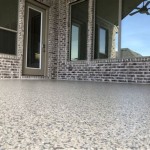How To Lay Patio Pavers On Grass
Laying patio pavers on grass is a great way to create a beautiful and functional outdoor space. It's a relatively easy project that can be completed in a weekend, and it doesn't require any special skills or tools. Here are the steps on how to lay patio pavers on grass:
1. Prepare the area
The first step is to prepare the area where you will be laying the pavers. This involves removing any grass or weeds, and leveling the ground. You can use a sod cutter to remove the grass, or you can simply dig it out with a shovel. Once the grass is removed, use a level to check the ground and make sure it is level. If the ground is not level, you will need to add or remove soil to level it out.
2. Create a base
Once the area is prepared, you need to create a base for the pavers. This base will help to support the pavers and prevent them from sinking into the ground. The base can be made from a variety of materials, such as gravel, crushed stone, or sand. Gravel is the most common material used for a base, and it is relatively inexpensive and easy to work with. To create a base, simply spread the gravel over the prepared area and compact it with a tamper.
3. Lay the pavers
Once the base is in place, you can start laying the pavers. Start by laying the pavers around the perimeter of the area. Once the perimeter is complete, you can fill in the center. When laying the pavers, make sure to leave a small gap between each paver. This gap will allow water to drain through and prevent the pavers from freezing together in the winter.
4. Compact the pavers
Once the pavers are laid, you need to compact them. This will help to secure the pavers in place and prevent them from shifting. To compact the pavers, use a tamper or a plate compactor. If you are using a tamper, simply hit each paver with the tamper until it is firmly in place. If you are using a plate compactor, start by compacting the edges of the area, and then work your way towards the center.
5. Fill the joints
Once the pavers are compacted, you need to fill the joints between the pavers. This will help to prevent weeds from growing between the pavers and it will also give the patio a more finished look. The joints can be filled with a variety of materials, such as sand, polymeric sand, or mortar. Sand is the most common material used to fill the joints, and it is relatively inexpensive and easy to work with. To fill the joints with sand, simply pour the sand over the joints and sweep it into the joints with a broom. Polymeric sand is a more expensive option, but it is more durable than sand and it will help to prevent weeds from growing between the pavers. To fill the joints with polymeric sand, follow the manufacturer's instructions.
6. Seal the pavers
Once the joints are filled, you can seal the pavers. This will help to protect the pavers from the elements and it will also give them a more finished look. There are a variety of sealers available, so be sure to choose one that is specifically designed for patio pavers. To apply the sealer, simply follow the manufacturer's instructions.
Laying patio pavers on grass is a relatively easy project that can be completed in a weekend. By following these steps, you can create a beautiful and functional outdoor space that you will enjoy for years to come.

Diy Patio With Grass Between Pavers And A Fire Pit

Diy Patio With Grass Between Pavers And A Fire Pit

How To Install Pavers Installing A Patio Step By Guide

Diy Patio With Grass Between Pavers And A Fire Pit

Diy Patio With Grass Between Pavers And A Fire Pit

Diy Paver Artificial Turf Patio

Diy Patio With Grass Between Pavers And A Fire Pit

Diy Patio With Grass Between Pavers And A Fire Pit Backyard Designs

How To Install Artificial Grass Between Pavers Paving Ideas Festival Turf

How To Lay Artificial Grass Between Pavers Turf Factory








